Rice terraces in Vietnam are a breathtaking blend of nature and human ingenuity, carved into mountainsides by generations of farmers. These cascading fields, vibrant with shades of green and gold, offer travelers a chance to witness stunning landscapes and immerse themselves in the rich cultures of Vietnam’s ethnic communities. Planning your Vietnam and Cambodia holidays to explore the top rice terraces in Vietnam, from the misty hills of Sa Pa to the remote corners of Hoang Su Phi,
Here are the top rice terraces to explore in Vietnam
1. Sa Pa (Lao Cai Province)
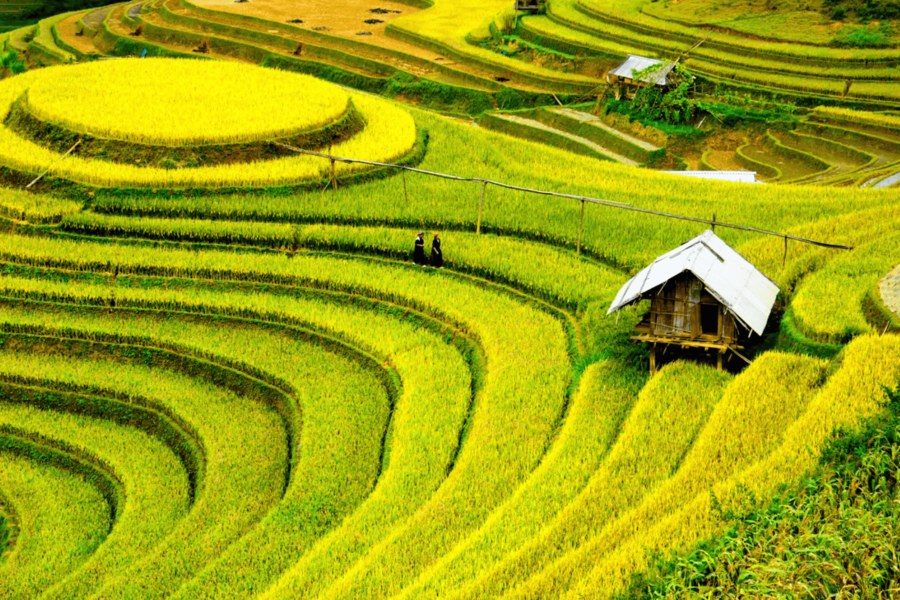
Tucked in the Hoang Lien Son Mountains, Sa Pa is renowned for its sprawling rice terraces cultivated by the Hmong and Dao ethnic groups. The misty air and rolling green fields create a dreamlike setting, especially during the planting season (May-June) or harvest time (September-October). Trekking through villages like Cat Cat, Ta Van, or Lao Chai offers a glimpse into local life, with opportunities to stay in homestays for an authentic experience. The view from Fansipan, Vietnam’s highest peak, adds a majestic perspective to the terraced landscape. Sturdy shoes and a local guide are recommended to fully appreciate the cultural and natural beauty of this iconic destination.
2. Mu Cang Chai (Yen Bai Province)
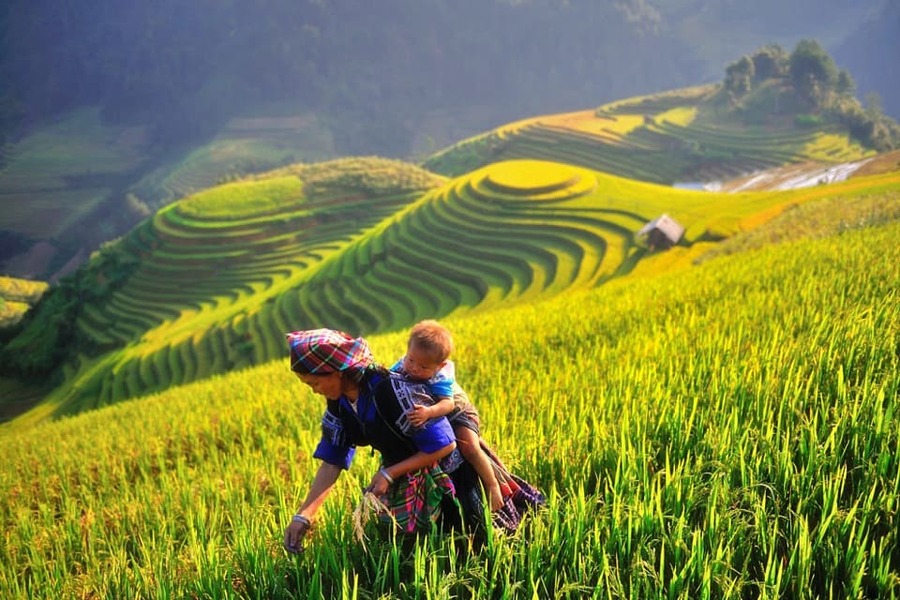
Mu Cang Chai, a National Heritage Site in Yen Bai Province, showcases some of the most dramatic rice terraces in Vietnam, carved into steep hills with mesmerizing contours. Vietnam’s rice terraces here glow golden during the harvest season (September-October), with viewpoints like La Pan Tan, Khau Pha Pass, and Mam Xoi Hill offering stunning vistas. Driving or motorbiking along winding roads reveals the grandeur of these terraces, while Hmong villages provide cultural depth. A reliable vehicle or guide is essential for navigating the rugged terrain, and a camera is a must to capture the beauty of Vietnam’s rice terraces in Mu Cang Chai.
3. Ha Giang (Dong Van Karst Plateau Geopark)
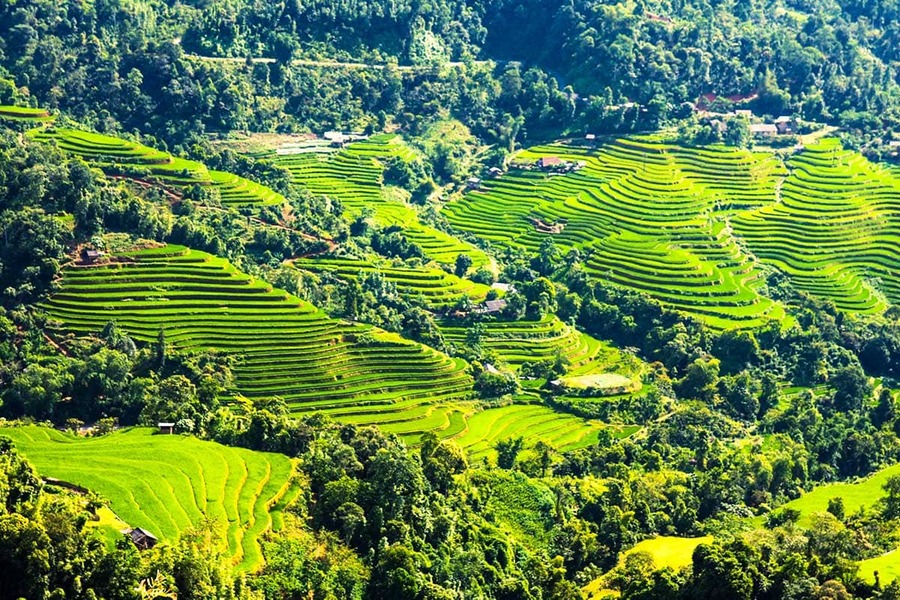
In Vietnam’s northernmost province, Ha Giang’s rice terraces unfold against a rugged backdrop of limestone peaks within the UNESCO-listed Dong Van Karst Plateau Geopark. Less crowded than Sa Pa, the terraces around Dong Van and Meo Vac offer raw, untouched beauty, especially from June to September when the fields are lush. Exploring local markets and interacting with ethnic groups like the Tay and Nung enrich the experience. The Ha Giang motorbike loop is a thrilling way to navigate the challenging roads, but respect for local customs is crucial when visiting villages.
4. Pu Luong (Thanh Hoa Province)
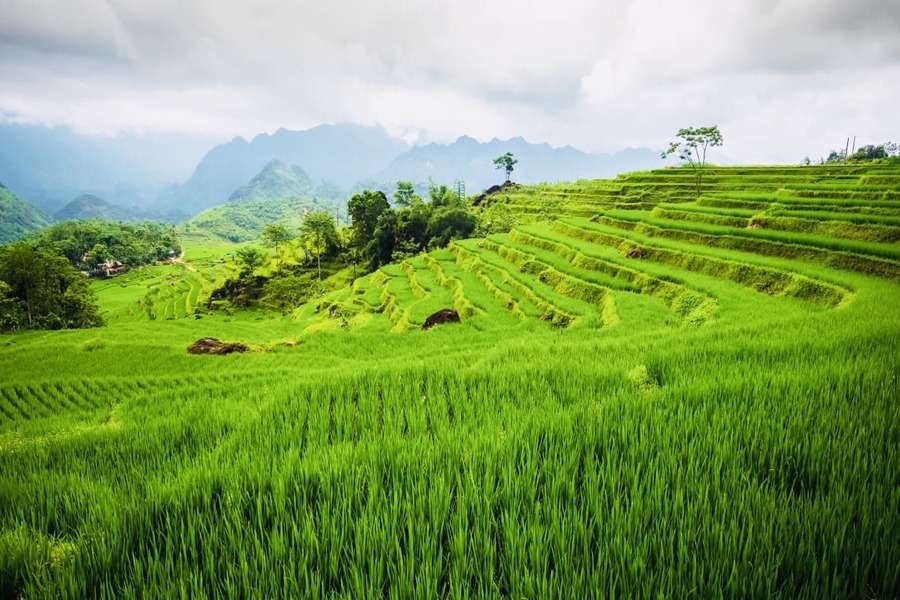
Pu Luong Nature Reserve in Thanh Hoa Province is a serene, off-the-beaten-path destination where rice terraces are framed by lush forests and waterfalls. Cultivated by the Thai ethnic group, the terraces are dotted with traditional stilt houses, offering a peaceful retreat for eco-conscious travelers. Trekking through the reserve reveals hidden waterfalls and bamboo groves, with eco-lodges and homestays providing sustainable lodging options. The rice-growing season (May-July) is ideal for visits, and travelers should pack light trekking gear and insect repellent to fully enjoy this tranquil paradise.
5. Hoang Su Phi (Ha Giang Province)
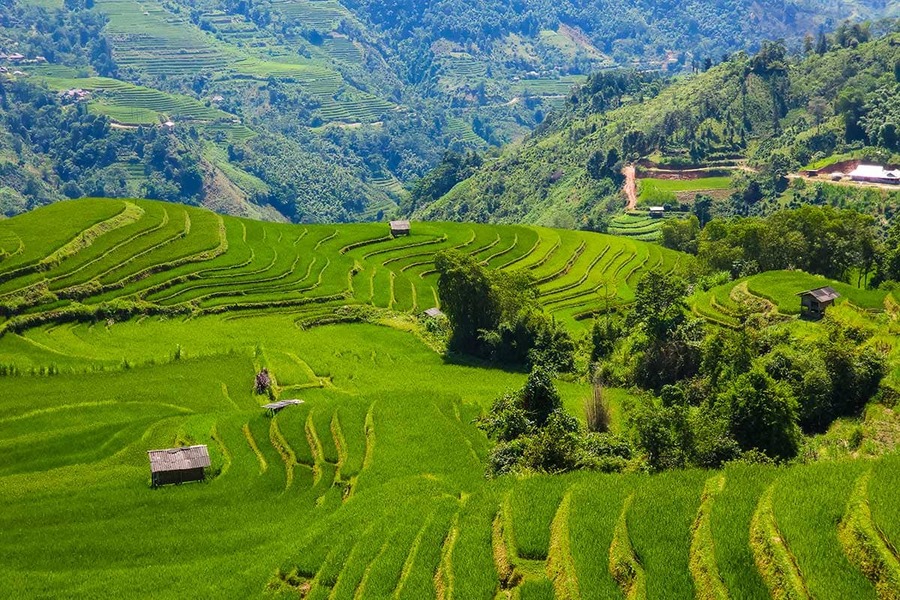
Hoang Su Phi, another gem in Ha Giang, features spectacular rice terraces crafted by the Dao and La Chi ethnic groups across steep, undulating hills. Its remote location ensures a quiet escape, with golden fields during the harvest season (September-October) creating a stunning visual. Viewpoints like Ban Phung and Ban Luoc offer panoramic vistas, and the annual Rice Harvest Festival showcases vibrant local traditions. Due to its isolation, careful transportation planning is necessary, and a local guide can deepen your understanding of the region’s unique culture and landscapes.

0 Comment